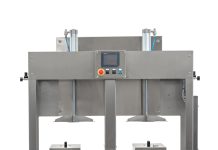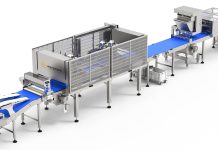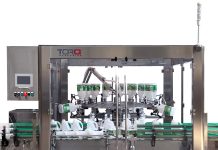Results
The five different labels of activated sodium bentonite showed significant differences in surface charge density, SSA, and swell index (table 1). Sauvignon blanc had a lower pH, a darker color, and lower concentrations of total sulfur dioxide than Chardonnay (table 2). Chardonnay showed higher total protein content than Sauvignon wine and from preliminary evaluation it required a greater bentonite dose (100 g/hl) than Sauvignon (50 g/hl) to achieve stability. After bentonite fining, more proteins were removed from Chardonnay at pH 3.42 than from Sauvignon at pH 3.27, as like as specific protein removal (mg proteins/g bentonite) was higher in Chardonnay than in Sauvignon (table 3). Because proteins are less cationic at higher pHs, this difference could be due to less competition between hydrogen ions and proteins at higher wine pHs. Indeed, the different pH values of wines modified the efficacy of bentonite deproteinization and the surface charge of the bentonite [11,14].
Both unfined Chardonnay (table 4) and Sauvignon (table 5) wines showed similar protein patterns, except for some unidentified proteins. Previous reports [7,15] have indicated that specific proteins have major influence on wine haze formation, in particular chitinases, thaumatin-like proteins, vacuolar invertase and glucanases. The absence of class IV endochitinase in the unfined Sauvignon wine (table 5) and its presence in unfined Chardonnay wine (table 4) have been already observed by other researchers [2,7]. This is interesting because this protein class is considered to be the major allergen in Novello and Fragolino wines [16]; its absence in some wines could be investigated in allergological studies and may eventually provide useful information for allergic patients. The thaumatin-like proteins protein in both the unfi ned wines accounted for almost 70% of the total proteins: 35% of the total thaumatin-like proteins content in Chardonnay (table 4) and 58% in Sauvignon (table 5) were conserved after fining accordingly to other reports [7]. In Sauvignon wine fining (table 5), all bentonites were active on thaumatin-like proteins and on low molecular weight proteins. The vacuolar invertase contained in Chardonnay wine was significantly reduced by GW, PW, S and TG (table 4). In Sauvignon, only PW bentonite was able to remove the vacuolar invertase proteins (table 5). Glucanases were not found in our wines; this result is consistent with other studies[7]. Finally, the loss of lipid transfer proteins by means of bentonite fining (tables 4 and 5) is very interesting when considering the potential allergenicity of this protein[16,17].
Conclusion
The tendency of bentonite to remove specific wine proteins is related to the different chemical-physical characteristics of each wine as already reported[1,5,14,18,19]. Except for the lipid transfer protein, which was reduced by bentonite in both wines, Sauvignon proteins (table 5) were generally less susceptible to removal. Differently, for Chardonnay wine (table 4), GW and PW bentonites showed to selectively remove residual proteins. Finally, the treatment with a sufficient dose of bentonite is a promising tool allowing the reduction of factors affecting the allergenicity of the wines, i.e. the class IV endochitinase and the lipid transfer proteins.
by Roberta Mastrocinque, Roberta Dordoni, Milena Lambri – Istituto di Enologia e Ingegneria Agro-Alimentare, Università Cattolica del Sacro Cuore.




